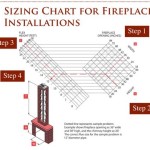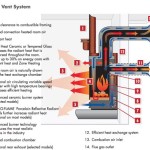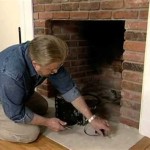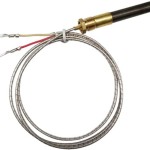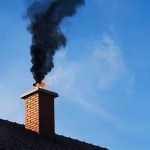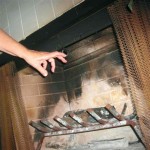Propane Fireplace Insert Reviews: A Comprehensive Guide
Propane fireplace inserts offer an efficient and aesthetically pleasing alternative to traditional wood-burning fireplaces. They provide the ambiance of a real fire without the mess, inconvenience, and environmental concerns associated with wood. This article aims to provide a comprehensive overview of propane fireplace inserts, evaluating key features, benefits, and considerations to assist potential buyers in making informed decisions.
Propane fireplace inserts are designed to be installed directly into existing fireplace openings. They typically consist of a burner system, artificial logs, a glass front, and a control panel. Propane, a readily available and relatively clean-burning fuel, powers the insert. The installation process usually requires professional assistance to ensure proper venting and gas line connections.
The market offers a wide variety of propane fireplace inserts, varying in size, style, heat output, and features. Understanding these factors is essential in selecting an insert that meets individual heating needs and aesthetic preferences. This guide will delve into the advantages and disadvantages of specific models based on user reviews and expert analysis.
Understanding the Key Benefits of Propane Fireplace Inserts
Propane fireplace inserts present several distinct advantages over traditional wood-burning fireplaces and other heating options. These advantages include convenience, efficiency, and environmental considerations. The following points elaborate on these key benefits.
Convenience: Propane fireplace inserts offer unparalleled convenience. Unlike wood-burning fireplaces, they eliminate the need for sourcing, storing, and handling firewood. Starting a fire is as simple as pressing a button or flipping a switch. Many models include remote controls, allowing for adjustments to flame height, heat output, and even programmable timers. This ease of use makes them ideal for individuals with mobility issues or those seeking a hassle-free heating solution. Cleaning is also significantly easier. The absence of wood ash and soot minimizes the need for frequent cleaning, requiring only occasional glass cleaning to maintain a clear view of the flames.
Efficiency: Propane fireplace inserts are significantly more efficient than traditional fireplaces. Wood-burning fireplaces often lose a substantial amount of heat through the chimney, resulting in only a fraction of the heat generated actually warming the room. Propane inserts, on the other hand, are designed to maximize heat retention and distribution. They typically feature sealed combustion systems that draw air from outside the home, preventing heat loss up the chimney. Many models also incorporate features like blowers and fans to circulate warm air more effectively throughout the room. This increased efficiency translates into lower heating bills and reduced energy consumption.
Environmental Considerations: Propane fireplace inserts offer a more environmentally friendly alternative to wood-burning fireplaces. Burning wood releases particulate matter and other pollutants into the air, contributing to air pollution and potential respiratory problems. Propane, being a cleaner-burning fuel, produces significantly fewer emissions. While propane combustion does produce some carbon dioxide, a greenhouse gas, the overall environmental impact is generally lower compared to burning wood. Furthermore, propane is a readily available and domestically produced fuel, reducing reliance on foreign energy sources.
Analyzing Key Features to Consider When Choosing an Insert
Selecting the right propane fireplace insert requires careful consideration of several key features. These features influence the insert's performance, aesthetics, and overall suitability for a particular home. The following sections detail these crucial factors.
Heat Output (BTU): British Thermal Units (BTUs) measure the heat output of a fireplace insert. The appropriate BTU rating depends on the size of the room to be heated. A larger room requires a higher BTU rating to effectively maintain a comfortable temperature. Manufacturers typically provide BTU recommendations based on square footage. It is important to consider the insulation of the room and the climate when determining the appropriate BTU rating. An under-sized insert will struggle to heat the room adequately, while an over-sized insert may result in overheating and wasted energy.
Venting Options: Propane fireplace inserts require proper venting to safely exhaust combustion byproducts. There are typically two main venting options: direct vent and B-vent. Direct vent systems draw air from outside the home and exhaust combustion gases directly outside, offering the highest level of safety and efficiency. B-vent systems utilize existing chimneys but require careful inspection and potentially relining to ensure proper ventilation. The choice of venting system depends on the existing chimney setup and local building codes. Professional installation is essential to ensure proper venting and prevent carbon monoxide poisoning.
Aesthetics and Design: Propane fireplace inserts come in a variety of styles and designs to complement different home décor. Options include traditional log sets, contemporary glass media, and various flame patterns. The appearance of the flames and the realism of the log set are important considerations for many buyers. Some models feature adjustable flame height and ember bed lighting to create a more realistic and customizable fire experience. The finish and design of the insert itself should also be considered to ensure it blends seamlessly with the existing fireplace surround and overall room aesthetic.
Ignition Systems: The ignition system is another key feature to consider. There are generally two types of ignition systems: standing pilot and electronic ignition. Standing pilot systems keep a small pilot light burning constantly, providing instant ignition. While convenient, they consume propane even when the fireplace is not in use. Electronic ignition systems, on the other hand, ignite the burner only when needed, saving energy. Some electronic ignition systems also feature battery backup in case of power outages.
Safety Features: Safety is paramount when selecting a propane fireplace insert. Look for inserts that are certified by recognized organizations like CSA or UL. These certifications indicate that the insert has been tested and meets safety standards. Features such as automatic shut-off systems, which turn off the gas supply in the event of a malfunction, are also important. A properly installed and maintained carbon monoxide detector is essential in any home with a propane fireplace insert.
Reviewing Popular Propane Fireplace Insert Models
The market offers a diverse range of propane fireplace inserts, each with its unique features and benefits. Examining specific models based on user reviews and expert opinions can aid in the selection process. This section provides an overview of some popular models, highlighting their strengths and weaknesses.
Individual models often receive varying reviews based on individual installation experiences and user preferences. Factors like ease of installation, responsiveness of customer service, and specific aesthetic tastes often influence user ratings. Therefore, considering a broad range of sources is best, including professional reviews and aggregated customer feedback.
It is crucial to consult with a qualified installer before purchasing any propane fireplace insert. A professional can assess the existing fireplace setup, recommend the appropriate model based on heating needs and venting requirements, and ensure a safe and efficient installation. They can also advise on local building codes and regulations.
While it is impossible to provide a definitive "best" model due to varying individual needs and preferences, examining the features and common feedback associated with popular models can offer valuable insights. Potential buyers are encouraged to research a few models that align with their initial criteria, then delve deeper into specific reviews and expert analyses before making a purchase decision.
Ultimately, the ideal propane fireplace insert is one that effectively heats the desired space, complements the home's aesthetic, and provides a safe and convenient source of supplemental heat. Careful consideration of the factors outlined in this guide, combined with thorough research and consultation with qualified professionals, will help ensure a satisfactory and long-lasting purchase.
.aspx?strip=all)
Top 11 Gas Fireplace Insert Trends Of 2024

Procom 26 000 Btu Vent Free Dual Fuel Propane And Natural Gas Indoor Fireplace Insert With T Stat Control 170082 The Home Depot

Fireplace Insert Guide Fireplaces Direct Learning Center

Top Benefits Of Installing A Propane Fireplace

Enviro Ex32 Friendly Fires

Reviews For Procom 26 000 Btu Vent Free Dual Fuel Propane And Natural Gas Indoor Fireplace Insert With T Stat Control Pg 1 The Home Depot

Majestic 30 Inch Ruby Direct Vent Gas Fireplace Insert With Blower

Enviro E25 Friendly Fires

Inserts Gas Kingsman Direct Vent Fireplace Insert Ipi Propane Idv33lpe

Enviro E Series Gas Or Propane Insert Fireplace Fireplaces By Cameron
Related Posts

